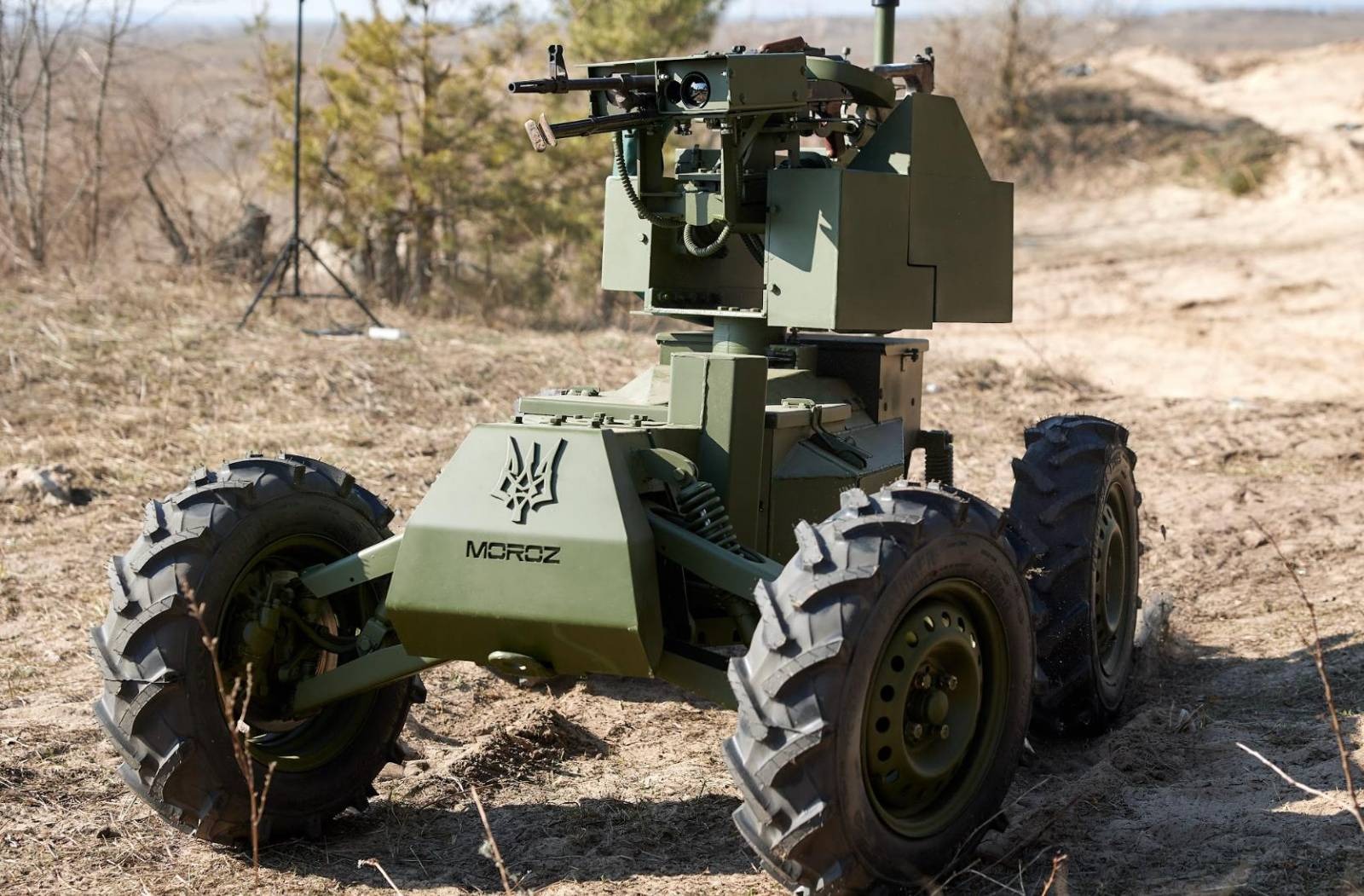In December 2024, Ukrainian forces operating north of Kharkiv reportedly conducted their first ever attack on Russian positions using exclusively unmanned technologies. This landmark military operation, which featured a combination of machine gun-equipped ground drones and kamikaze aerial drones, underscored Ukraine’s increasingly sophisticated use of robotic systems, while also highlighting the evolving role being played by these technologies on the modern battlefield.
As Ukrainian commanders prepare for a fourth year of combat in Europe’s largest war since World War II, they are now hoping that their country’s growing arsenal of robotic systems can help counter Russia’s often overwhelming advantages in both manpower and firepower. “Ukrainian officials have repeatedly highlighted Ukraine’s efforts to utilize technological innovations and asymmetric strike capabilities to offset Ukraine’s manpower limitations in contrast with Russia’s willingness to accept unsustainable casualty rates for marginal territorial gains,” noted the Institute for the Study of War in late 2024.
Ukraine’s emphasis on unmanned robotic systems certainly makes good sense. While overall Ukrainian casualties during the first three years of the full-scale invasion are thought to be significantly lower than Russian losses, Russia’s far larger population means Ukraine has little prospect of success in a grinding war of attrition. Over the past year, reports of Ukrainian mobilization challenges and personnel shortages have become more and more frequent, with desertion rates also reaching record highs.
With the Ukrainian military outnumbered and outgunned, defense tech innovations have played an important part in Kyiv’s war effort since 2022. Many of Ukraine’s key advances have come via the country’s vibrant startup sector, much of which pivoted to military projects in the wake of Russia’s full-scale invasion. In July 2024, the Associated Press reported that Ukraine had developed an ecosystem of laboratories to create a robot army, with around 250 defense startups active in secret locations “that typically look like rural car repair shops.”
The Ukrainian government has sought to support these grassroots efforts with the creation of initiatives like the BRAVE1 defense tech cluster, which was established in spring 2023 to streamline cooperation between the private sector, the state, and the Ukrainian military. In a move hailed by officials in Kyiv as a unique development, Ukraine launched a dedicated drone warfare branch of the country’s military in summer 2024. The establishment of Ukraine’s Unmanned Systems Forces demonstrated that Kyiv was preparing for “the war of the future, not the war of the past,” commented USF commander Colonel Vadym Sukharevskyi.
Eurasia Center events

Robotic systems alone cannot solve the Ukrainian military’s manpower shortages. At present, the focus is on developing technologies capable of performing a range of specific combat and logistical tasks. For example, Ukraine plans to deploy tens of thousands of robotic ground vehicles along the one thousand kilometer front line of the war during 2024. These systems will handle functions including mine-laying and de-mining, the delivery of ammunition and other supplies to troops in trenches, and the evacuation of wounded soldiers to rear positions where they can receive medical treatment.
Unmanned ground vehicles are seen by Ukrainian military planners as a particularly effective response to the ubiquity of reconnaissance and attack drones above the battlefield. With the entire front line area now under more or less constant surveillance, it can be extremely difficult for soldiers to move about above ground, and virtually impossible to travel in vehicles without electronic jamming devices. Robotic systems capable of operating in dangerous environments can go some way to addressing this problem, and can help make sure front line units are resupplied in a timely fashion.
The Ukrainian army’s use of robotic systems is already attracting consideration international attention. With new models typically undergoing testing in combat conditions, the cycle from development to deployment is often exceptionally dynamic, creating unprecedented opportunities for defense tech companies. Maintaining Ukraine’s current rapid pace of innovation is recognized as vital in order to remain one step ahead of Russia, which is also investing heavily in robotic systems and drones.
With Ukrainian efforts to implement AI technologies expected to advance in 2025, there are concerns that the fledgling robot armies currently taking shape on the battlefields of Ukraine could reduce the barriers to killing and dramatically escalate the potential for future conflicts. However, with their country fighting for survival, Ukrainian defense tech developers are primarily concerned with saving the lives of their compatriots and defeating Russia’s invasion.
David Kirichenko is an associate research fellow at the Henry Jackson Society.
The views expressed in UkraineAlert are solely those of the authors and do not necessarily reflect the views of the , its staff, or its supporters.

The Eurasia Center’s mission is to enhance transatlantic cooperation in promoting stability, democratic values and prosperity in Eurasia, from Eastern Europe and Turkey in the West to the Caucasus, Russia and Central Asia in the East.
Image: UNITED24/Cover Images via Reuters Connect. This image shows: The MOROZ.
Ukraine’s soldiers are getting help from some robot chums on the battlefield
At the UNITED24 anniversary summit earlier this year, Ukrainian President Volodymyr Zelensky unveiled a groundbreaking initiative to raise funds for combat robots.
“Squads of robots will save the lives of our military and civilians,” Zelensky stated.
These robots are set to play diverse roles, from logistics support and towing operations to minelaying, demining, and even self-destruction for tactical advantage.
“They will fight alongside people and for people,” Zelensky added..
Ukraine, via the UNiTED24 platform, plans to raise funds for three primary types of ground robotic systems.
Combat robots, the first category, are designed for remote operations, including assault, defence, surveillance, and reconnaissance. These robots, equipped with 7.62mm PKT and PKM machine guns and 12.7mm NSVT and M2 Browning machine guns, can engage targets up to 2 kilometres away.
They offer substantial protection against small arms fire and feature thermographic cameras for night missions. Models like SHABLYA M2, LYUT, MOROZ, and D-11 are already demonstrating their battlefield effectiveness, though more units are needed to meet the demand.
Self-destructive robots and minelayers represent the second category. These units are designed to target enemy armored vehicles and fortifications. Capable of carrying up to two TM-62 anti-tank mines or a 40 kg payload, these robots can charge towards targets at speeds up to 25 km/h, detonating on impact. They can also remotely lay mines to disrupt enemy movements. The RATEL S and ARK-1 robots operate from a safe distance of up to 5.5 kilometers, ensuring the operators’ safety while performing dangerous tasks.
The third category comprises logistical robots, vital for delivering supplies and evacuating wounded soldiers from the front lines. These versatile machines can transport u








